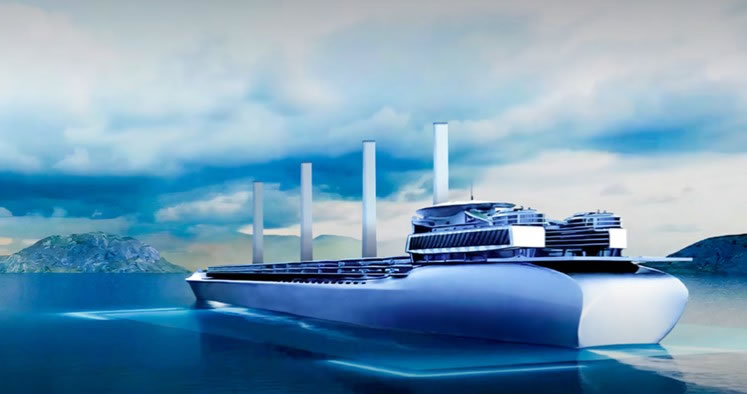

NIEUWS NOUVELLES NEWS
- Welcome
Accueil - Nieuws
Nouvelles- 25/10 U.S. woman reportedly dead, 5 rescued after Viking ship replica sinks off Norway
- 27/10 Shipping industry nears 100-installation milestone of wind propulsion systems
- 30/10 World's biggest underwater methane hotspot is found off Barents Sea coast
- 01/11 Hong Kong keeps Russia’s dark fleet afloat
- 03/11 Shipowners Who Force Seafarers To Sail High-Risk Areas May Face Sanctions
- 07/11 Primeur grootste convertor golfenergie ter wereld komt uit Europa
- 09/11 Helibeloodsing lijkt weer mogelijk, mits extra partners
- 12/11 Pirates, Middle East instability and drought disrup the world’s ports
- 14/11 Russia Still Second Largest Gas Provider to EU, After Norway, with LNG Imports Increasing
- 16/11 Megaship deliveries likely to impact profits: agency
- 19/11 P&O Ferries ziet Zeebrugge-Tilbury verstoord door tekort beloodsing
- 21/11 Wallenius Wilhelmsen bestelt vier recordschepen voor 11.700 auto's
- 23/11 Flanders Ship Repair verhuist naar militair beveiligde nieuwbouw
- Kalender Calendrier
- BML Nieuws
LMB Nouvelles - Historiek
Historique- 28/10 Declining and rising empires: Venice, the Ottomans and Spain
- 04/11 Declining and rising empires: Venice, the Ottomans and Spain(II)
- 11/11 Les Mutiniers de la flotte anglaise 1797
- 18/11 De schipbreuk van de kotter Princess of Wales en de schoener l'Aventure (I)
- 25/11 De schipbreuk van de kotter Princess of Wales en de schoener l'Aventure (II)
- Dossier
Dossier
- 24/10 The indispensability of the Greek-owned fleet: international and cross-trading
- 26/10 Confirmation on use of standard terms
- 29/10 Port State Control – Be prepared for new campaigns and restrictions
- 31/10 Navigating the new normal: Vessel rerouting spurs higher emissions as ships avoid the Red Sea
- 02/11 BIMCO: Tanker Shipping Demand to Rise by 10.2% in 2024, Compared to 2022 Supply/demand balance
- 05/11 Project Lotus to provide transparent ownership cost
- 08/11 Shipping supply chains and global conflicts
- 10/11 Time to look beyond diesel: the decarbonisation pathway for tugs
- 13/11 Pirates, Middle East instability and drought disrup the world’s ports
- 15/11 Tankers: Peak Demand is Coming, But Cargoes Will Still Be Plenty
- 17/11 Red Sea diversions and slower ports cause bigger-than-expected issues – will they last?
- 20/11 Energie-eiland levert DEME, Jan De Nul en Smulders miljardendeal op
- 22/11 New survey findings shed light on the impact of decarbonisation on seafarers’ wellbeing
- 24/11 Red Sea gives shipping an Uber-style price surge
- Untitled Item
- Raad
Comité - Verenigingen
Associations - Contacten
Contacts - Links
Liens - Boeken
Livres - Archives
Archieven- Archieven 1 - Archives 1
- Archieven 2 - Archives 2
- Archieven 3 - Archives 3
- Archieven 4 - Archives 4
- Archieven 5 - Archives 5
- Archieven 6 - Archives 6
- Archieven 7 - Archives 7
- Archieven 8 - Archives 8
- Archieven 9 - Archives 9
- Archieven 10 - Archives 10
- Archieven 11 - Archives 11
- Archieven 12 - Archives 12
- Archieven 13 - Archives 13
- Archieven 14 - Archives 14
- Archieven 15 - Archives 15
- Archieven 16 - Archives 16
- Archieven 17 - Archives 17
- Archieves 18 Archieven 18
- Photos
Foto's
Shipping industry nears 100-installation milestone of wind propulsion systems
The application of wind-assisted propulsion systems (WAPS) across a variety of vessel types is nearing a tipping point with deployment likely to increase rapidly, but the lack of standardization for verifying fuel savings and concerns about equipment availability must be addressed, classification society Lloyd’s Register said in a new report.

With the industry close to achieving 100 installations and the orderbook reflecting the diversity of vessel types employing WAPS, along with increasingly substantial deployments as technologies move beyond prototype and pilot phases, the absence of a standard for verifying potential fuel savings is creating uncertainty for operators looking to select solutions.
With WAPS deployment likely to increase rapidly, driven by growing shipyard and operator familiarity with solutions, scaling up the supply chain to meet expected demand is a potential challenge. Market forecasts indicate that orders will accelerate especially in the bulk and tanker ship segments. Analysis of top-end potential identifies nearly 14,000 candidate vessels over the next 26 years.
With several suppliers delivering very few units today – but with more suppliers set to enter the market in the near future – shipowners and operators will need confidence that WAPS suppliers can remain competitive and deliver increasing numbers of units without jeopardizing project timeframes.
The report also points to the need for a wider base of shipyards with installation capabilities to meet expected demand, with only around sixteen yards to date having carried out WAPS retrofits.
While installations are not unfeasibly complex, they may be best implemented over multiple time periods, so project planning is a key consideration. Coordinating installations with scheduled maintenance and component lead times while working out the best time to install, safeguard compliance and minimize carbon cost exposure can prove challenging, the ‘Applying wind-assisted propulsion to ships’ report finds.
“Wind-assisted propulsion systems are increasingly being used by ship operators to reduce fuel consumption, meet energy efficiency regulations and minimise exposure to carbon costs. With 29 installations between 2018-2023 and 72 in the orderbook, LR’s new research report demonstrates that there is growing confidence in the available solutions,” Santiago Suarez de la Fuente, LR’s Ship Performance Manager, commented.
LMB-BML 2007 Webmaster & designer: Cmdt. André Jehaes - email andre.jehaes@lmb-bml.be